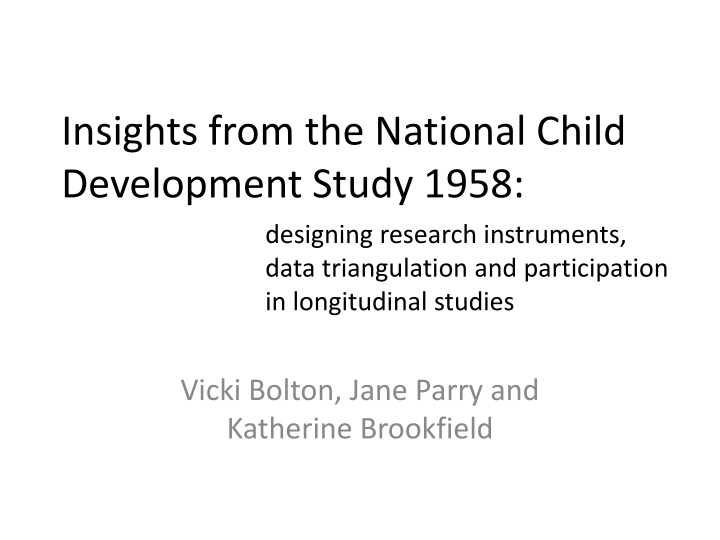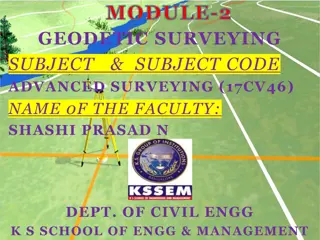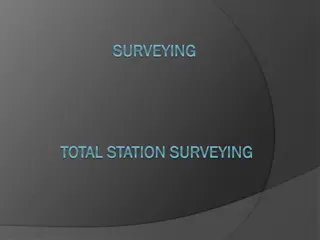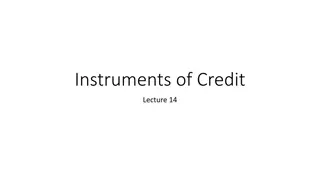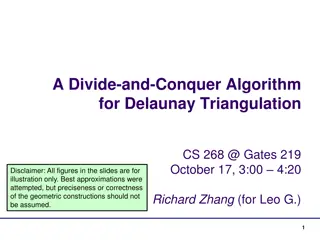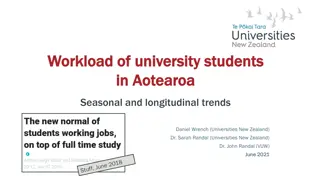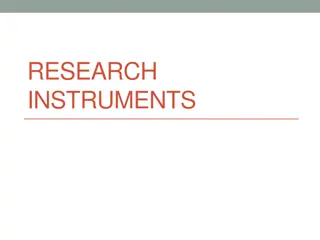Insights from the National Child Development Study: Research Instruments, Data Triangulation, and Longitudinal Participation
This research delves into the design of research instruments, data triangulation, and participation in the National Child Development Study of 1958 British birth cohort. The study covers the qualitative data collected up to 2008, with a focus on perennial participants, non-participants, frequent participants, and unemployed individuals. It explores the evolving nature of participation in longitudinal studies and the insights gained from analyzing qualitative and quantitative data, highlighting divergence in stories based on life events, transitions, and organizational involvement.
Uploaded on Sep 13, 2024 | 5 Views
Download Presentation

Please find below an Image/Link to download the presentation.
The content on the website is provided AS IS for your information and personal use only. It may not be sold, licensed, or shared on other websites without obtaining consent from the author.If you encounter any issues during the download, it is possible that the publisher has removed the file from their server.
You are allowed to download the files provided on this website for personal or commercial use, subject to the condition that they are used lawfully. All files are the property of their respective owners.
The content on the website is provided AS IS for your information and personal use only. It may not be sold, licensed, or shared on other websites without obtaining consent from the author.
E N D
Presentation Transcript
Insights from the National Child Development Study 1958: designing research instruments, data triangulation and participation in longitudinal studies Vicki Bolton, Jane Parry and Katherine Brookfield
Introduction ESRC-funded project Social participation in the National Child Development Study 1958 British birth cohort Data collected (to date) in 8 waves: 1st wave 1958 (n = approx. 17,000) 8th wave 2008 (n = approx. 9,800) Qualitative data collected c. 2008 (n=220) from which we sampled 50.
Our qualitative sample 20 perennial participants - joined in with activities / groups at each wave of the NCDS 21 non-participants - never joined in 8 frequent participants - volunteered at least once a week or joined in with the activities of at least 3 organisations a week at age 50 1 unemployed individual
Structure The design of research instruments in longitudinal research: stick or twist? Interpreting the research agenda: the insights of data triangulation for linguistic tensions Growing up as a participant in the NCDS and the evolving nature of participation in a longitudinal study
Stability Cohort with longitudinally linked records Emphasis on health Socio-demographic details recorded Participation as membership Volunteering as leisure
Change Evolving purpose Evolving socio-demographic measures Fashionable topics : volunteering may be one of these
Did our datasets tell different stories about the same people? Divergence strongest for non- participants; Broad accuracy about frequent & perennials participation. Differences in terms of: no.of affiliated organisations; recognition of political/union activity; Influence of religion.
Why do the qualitative and quantitative datasets tell different stories for some people? Effect of life events and transitions; NCDS privileges joining in over a broader organisational involvement; Qualitative interviews pick up (or don t pick up) particular narratives of participation.
Different wording of the research instruments on participation: Quantitative (NCDS) Asked whether participants had ever been a member or were currently a member of a range of organisations: political party, trade union, environmental group, parents /school association, tenants/residents group or Neighbourhood Watch, religious Group or church organisation, voluntary service group, other community or civic group, social club/ working men s club, sports club, Women s Institute/ Townswomen s Guild, women s group/ feminist organisation, professional organisation, pensioners group organisation, Scouts/Guides organisation, any other organisation Qualitative (SPIS) Detailed probing on time use over the past week, including reasons for involvement Specific questioning on a smaller range of organisations, but using a looser definition of involvement? (not all followed up) Do you belong to any organised clubs or have any formal associations for example do you attend a church or evening classes, or are you a member of a political party, sports club or musical group? Do you do any voluntary or charitable work? Probe on reasons for changes in involvement over the years. Probed on frequency of involvement.
Growing up as a participant in the NCDS Changing (and variable) attitudes and experiences
The way I look at it is that, if youre helping future generations, its worthwhile doing, you know, so that s the way I would look at it. And the fact that you give us information back, and you tend to read it and think, well yeah, you know, all that work that you ve done, or help or whatever, it s been worthwhile, you know (David, NCDS Cohort) it made me feel singled out in a positive way. So I was quite proud of myself that I could get out of class to do the special things (Mary, NCDS Cohort) I m sure at one point getting called out of the class to go and answer a few questions and thinking, oh this is a bit strange, you know, what s going on, always felt, so from that point of view, kind of remember that (Alison, NCDS Cohort)
its like having an MOT, I mean youd [] pay good money to go to a hospital and have that done (Cathy, NCDS Cohort) poked and prodded and then having to fill in all these strange tests and things when I was really young (Joseph, NCDS Cohort) they were very personal about money and finances and how much we earned and I just felt, well, what s that got to do with--, you know (Donna, NCDS Cohort)
Changing nature of the NCDS (and longitudinal research) Information to participants Information collected on / from participants e.g.: Taken from the Bristol Social Adjustment Guide, completed by teachers when cohort members were age 11: In contacts with teacher, is like a suspicious animal From subject to participant
Conclusions The overall picture from this important and well- used cohort study is of stability. Health questions are detailed but social analysis may be rather broad. Differences in the wording and ordering of research questions have significant effects on the information obtained on participation. The participant experience in longitudinal research is varied and changeable.
